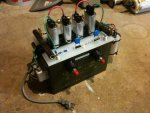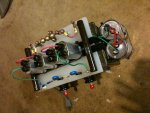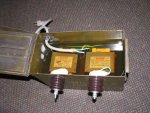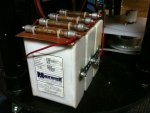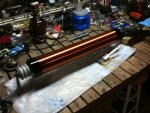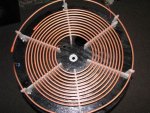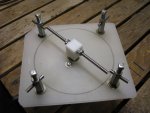nospin
0
- Joined
- Feb 13, 2010
- Messages
- 182
- Points
- 0
I'm having so much fun playing with this mini tesla (1.5 inch arcs) I can't wait to finish the bigger one (14" tall). The problem is the high frequency interferes with my moms digital TV waves so she keeps complaining.
Are there any cool experiments to try with it?
Also, I'm gonna be now building more caps. Monday is recycle day here and people throw out tons of jars.
EDIT: Is 10 gauge wire thick enough for a primary? My dad has 50' of 1/4 copper tubing, but it's his and I'm not allowed to use it.
And also, what would be the best configuration for a primary? How many winds do you think is good to start with? Should it be insulated wire or non-insulated wire?
How far apart should the primary wraps be?
Try some different toploads and a clear light bulb
play with tuning each time




